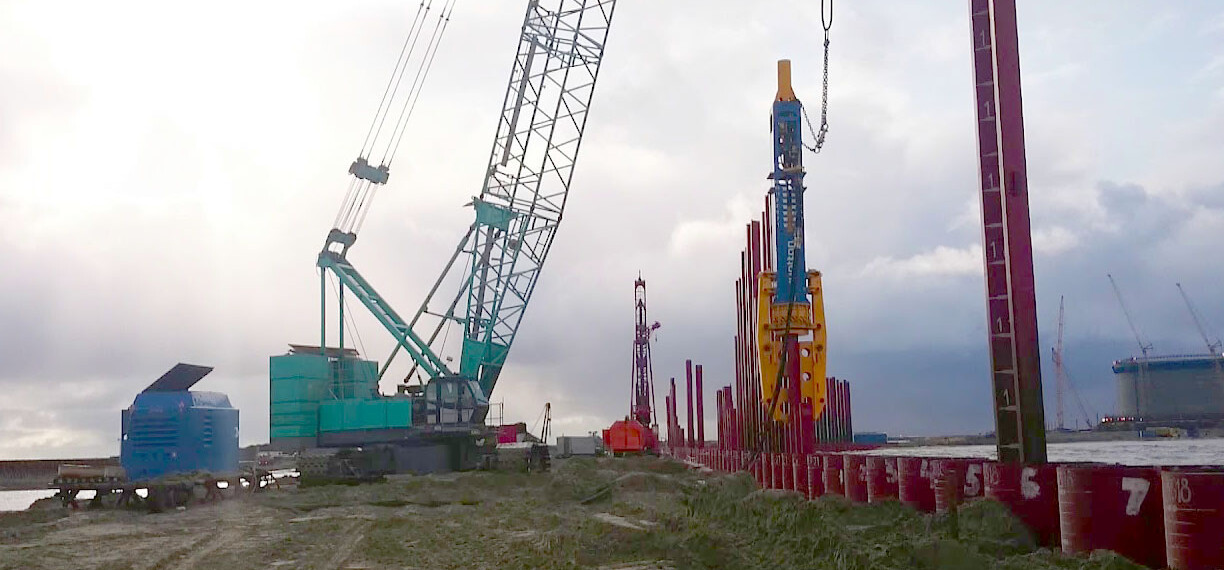Hydraulic hammer Junttan HHK 25/28S

The suspended hydraulic pile hammer is used for driving reinforced concrete and metal piles, rods, pipes, sheet piles, and tubular piles into the ground in coastal areas or seabeds. It can be utilized in coastal construction, the construction of marine stationary platforms, as well as in the construction of bridge foundations, hydraulic structures, thermal power plants, power lines, and other facilities. In some cases, the suspended hydraulic pile hammer is used to finish off driving tubular piles, sheet piles, and metal piles after preliminary immersion using a hydraulic or electric vibratory hammer.
Hydraulic impact hammers are a modernized, upgraded version of diesel impact hammers, which utilize hydraulic power units as a fuel source. Hydraulic hammers can drive not only steel piles, such as pipes, sheets, or beams, but also wooden and premanufactured concrete piles. Some hydraulic hammers can achieve up to 80 impacts per minute. In addition to their ability to drive steel, wooden, and premanufactured concrete piles, this type of pile hammer is considered more environmentally friendly than its diesel counterpart. Not only do hydraulic hammers not emit exhaust fumes into the environment, but the noise level from a hydraulic hammer is much lower than that of a diesel hammer.
Crane hydraulic hammers have irreplaceable features such as adjustable impact energy, number of impacts per minute and impact delay.
The minimum and maximum diameter of the driven pipe depends on the attachment equipment installed on the pile hammer and the impact energy of the hydraulic hammer. The following ratios are most commonly encountered:
- Metal pile (D530mm - 1020mm) - hydraulic hammer impact energy 60 - 168 kNm (Junttan HHK7/9, Junttan HHK10, Junttan HHK14)
- Metal pile (D1020mm - 1420mm) - hydraulic hammer impact energy 168 - 300 kNm (Junttan HHK14, Junttan HHK20)
- Metal pile (D1420mm < ...) - hydraulic hammer impact energy 300 < ... kNm (Junttan HHK20, Junttan HHK25/28, etc.)